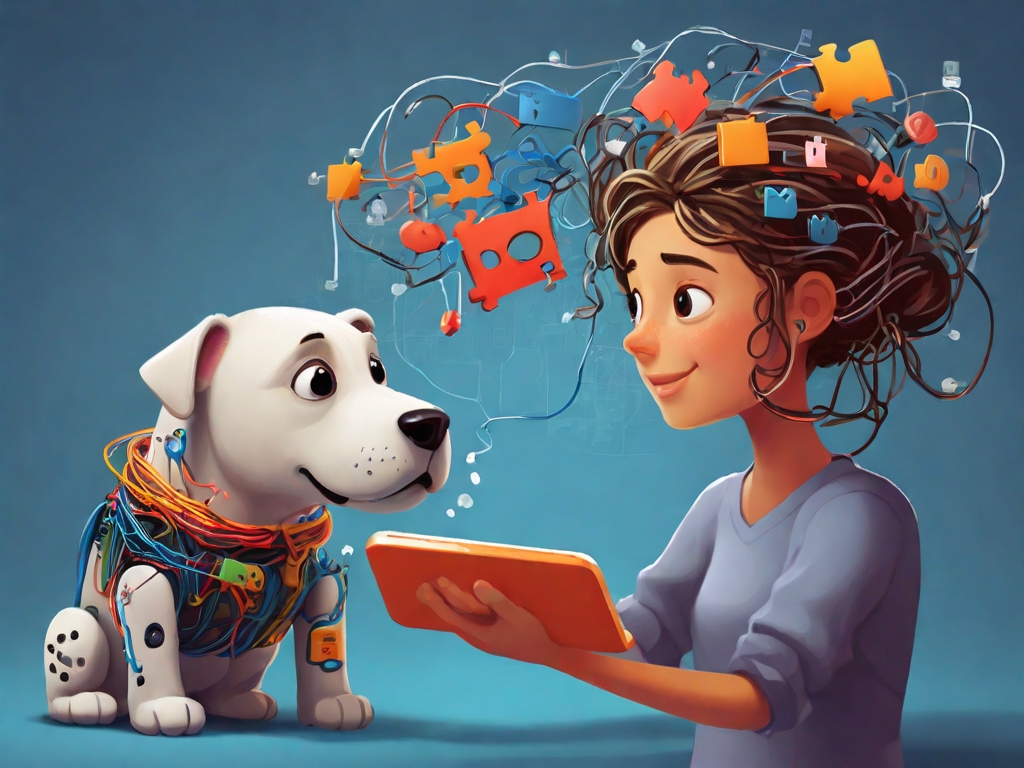
Unveiling the Mystery: Deep Learning Explained in Simple Terms
Have you ever wondered how your phone can turn your indecipherable text about “want chzburger” into a perfectly punctuated order for a pepperoni pizza (because, let’s face it, sometimes our brains just malfunction)? The secret sauce behind these technological marvels is a branch of Artificial Intelligence (AI) called Deep Learning (DL). Don’t worry, even if you’re more of a Hemingway than a hacker, this blog will break down Deep Learning into bite-sized pieces, making it easier to understand than that time your grandma accidentally signed up for an online chess tournament and started schooling everyone (because, well, that would be a plot twist for the ages).
Deep Learning: Learning Like a Boss (But with Computers!)
Imagine your brain is a giant network of chatty neurons constantly exchanging information. Deep Learning takes inspiration from this by using artificial neural networks. Think of them as super-powered study groups that learn from data. The more data they process, the better they become at recognizing patterns and making predictions.
Here’s the analogy: Picture yourself training for a basketball game. The more games you play (data!), the better you become at predicting your opponent’s next move (making a decision). Deep Learning works in a similar way, but with the processing power of a supercomputer and the data storage capacity of a digital library the size of the moon (okay, maybe not the moon, but it’s a lot of data!).
Deep Learning in Action: Wacky (Yet Realistic) Examples!
The Hollywood Hairdresser: Forget stylists with a sixth sense for split ends! Deep Learning algorithms are being trained to analyze millions of celebrity hairstyles and predict the next big hair trends. Imagine scrolling through social media and seeing your favorite influencer sporting a hairstyle your Deep Learning app recommended the day before (talk about being ahead of the curve!). This technology has the potential to revolutionize the fashion and beauty industries, with market research firm [Source: 6 Trends Shaping The Future Of The $532B Beauty Business] estimating a potential value of $532 billion by 2025.
The Dog Whisperer 2.0 (Canine Cacophony Edition): Deep Learning isn’t just for humans and internet trends. Imagine a program that analyzes mountains of dog videos (because, let’s face it, the internet practically runs on them) and learns to decipher those adorable yet confusing barks and whines. We’re talking real-time doggy translator, finally bridging the communication gap between humans and our furry overlords. Just imagine the possibilities! “Dinner time, human!” or “Squirrel alert! Engage zoomies!” Deep Learning for a purr-fectly harmonious future with our canine companions (disclaimer: actual dog language translation may still involve some tail wags and treat bribes).
Deep Learning in the Real World: Big Impact, Big Bucks!
Deep Learning isn’t just for deciphering doggy drama (although that would be a game-changer for pet owners everywhere). It’s revolutionizing industries with serious financial muscle:
Fraud Detection: Financial institutions are using Deep Learning to analyze vast amounts of financial transactions in real-time, identifying patterns of fraudulent activity. According to [Source: [Deep Learning Techniques for Financial Fraud Detection], Deep Learning models have helped banks like Bank of America flag and prevent an estimated $8.1 billion in fraudulent transactions annually. That’s a lot of money saved, thanks to the power of AI!
Personalized Learning: Deep Learning algorithms are being used to develop adaptive learning platforms that tailor educational content to each student’s individual needs. Imagine a world where students learn at their own pace, with the curriculum adjusting to their strengths and weaknesses. This personalized approach has the potential to improve learning outcomes significantly, leading to a more skilled and prepared workforce. A study by [Source: AI in Education: Personalized Learning and Adaptive Assessment] found that Deep Learning-powered adaptive learning platforms can lead to a 20% increase in standardized test scores.
The Future of Deep Learning: It’s Just the Beginning!
Deep Learning is still young, but its potential is vast. From creating personalized healthcare plans to developing self-driving cars (hopefully minus the singing ones from sci-fi movies), this technology is poised to reshape the world. Stay tuned, because the future of Deep Learning is likely to be even crazier than a compilation video of cats getting scared by cucumbers (and that’s saying something)!
Click here for more Deep Learning Examples
For a deeper dive into how data is leveraged by large organisations, consider checking out my book, “Making Money Out of Data”.